We Are Not Designers
18 – 21 October 2023
Louise Thornton, alumna of MA Fashion Curation and Cultural Programming writes: "During my time on MA Fashion Curation, I focused on my own community of LGBTQIA+ narratives and identities, culminating in my final project "Sapphic Style". Since finishing the MA, I have been involved in community-oriented exhibitions including "We Are Not Designers", a celebratory exhibition of the design and making skills of women in Somers Town, Camden.
The exhibition revolved around the series of workshops, "Journey to Create your own Garments", taking participants through different pattern making methods. They are led by London College of Fashion PhD researcher Joana Monteiro. Displayed throughout the gallery was the culmination of 18 months of these workshops and drop-in sessions involving over 20 women from the local community.
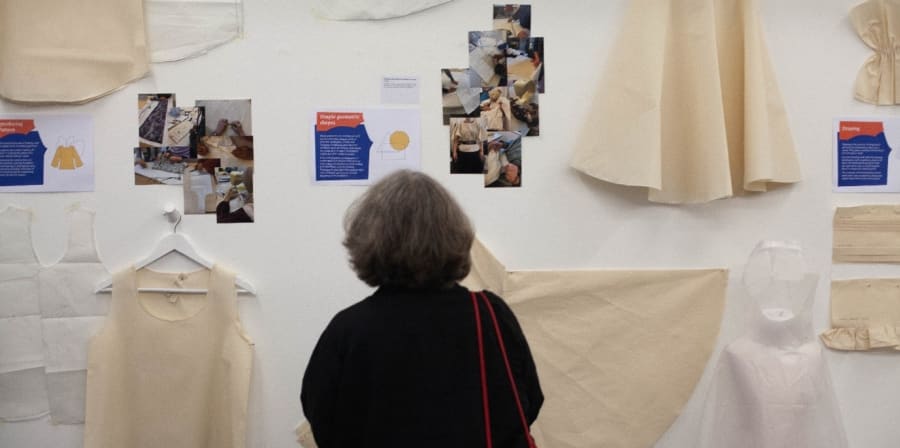
“There is so much behind our clothes.”
The exhibition aimed to embody this quote said by one of the participants involved in the project. Revealing both the technical aspects, and the stories behind the garments.

Entering a community project as an ‘outsider’ has its challenges. The tightknit group of women these workshops have formed is just one of many communities in the Somers Town area. I aimed to avoid the power dynamics of a ‘researcher’ versus ‘participant’ and moved towards a mutually beneficial relationship with everyone involved in the project. The emphasis was not on me as curator or on any particular person involved in the project. It was a very collaborative process between myself, as curator, the project lead, the graphic designer, and the core group of participants.
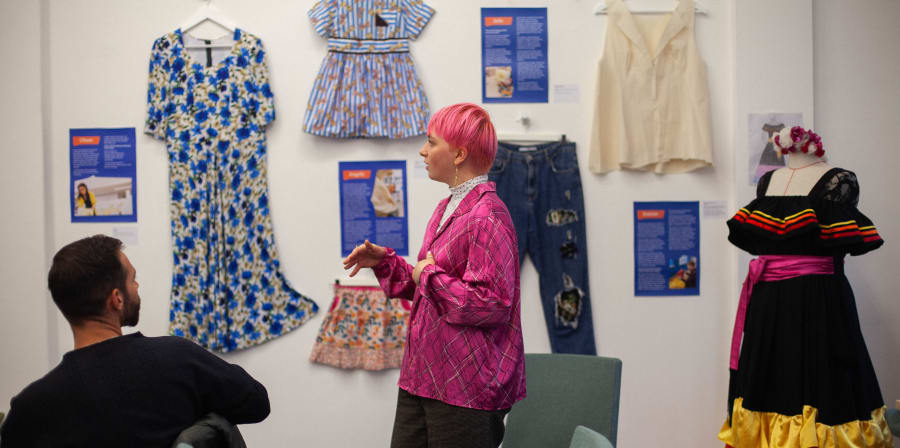
Having the chance to see the workshops in action, to chat to and ‘interview’ the women involved was key to understanding and getting to the heart of the exhibition. This was also important in ensuring both the curatorial vision and the agency and autonomy of all involved.
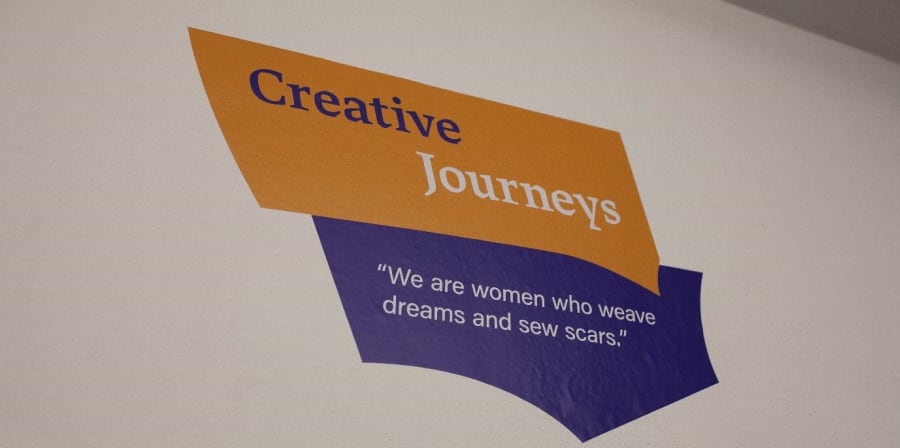
To start off with, I picked out some key themes from the brief Joana provided and from conversations I had with the participants. The three that stood out the most were community, creativity and process. This developed to become the themes of the exhibition:
- Creative Journeys
- Creative Practice
- Creative Community
Although the gallery was small and the exhibition was contained to one room, these distinct themes were implemented to demonstrate different journeys. Each theme focussed on different areas of the workshops and the participants from the personal to the technical aspects as well as the community as a whole.
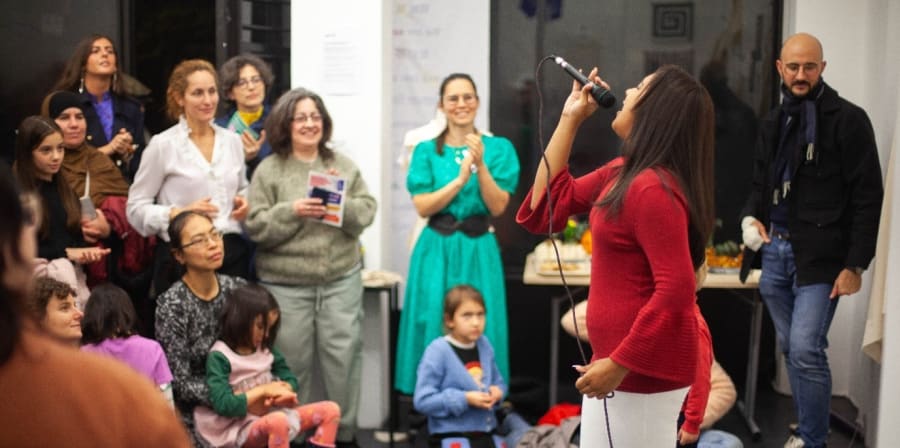
The gallery went through a journey of its own, its function altering from day-to-day. It was filled with people dancing to a cover of ‘I will survive’ by a local singer at the opening event and transformed into a space for reflection during the panel discussion 2 days later.
Although the exhibition was short, we packed a lot into the 4 days it was on with the events programming. These were essential in bringing people into the gallery, they came for the event but stayed for the exhibition, seeing something they may not have expected from a fashion exhibition.

We really wanted to utilise the large windows at the front of the gallery to encourage people to enter the space. Participants from the workshops were welcome to use a sewing machine that faced the window, showing visitors exactly what they have learnt and do in the workshops in action. A fabric banner that depicted the title of the exhibition in the 11 languages spoken by the participants allowed visitors to see themselves within the project, especially if they could connect to one of those 11 languages.
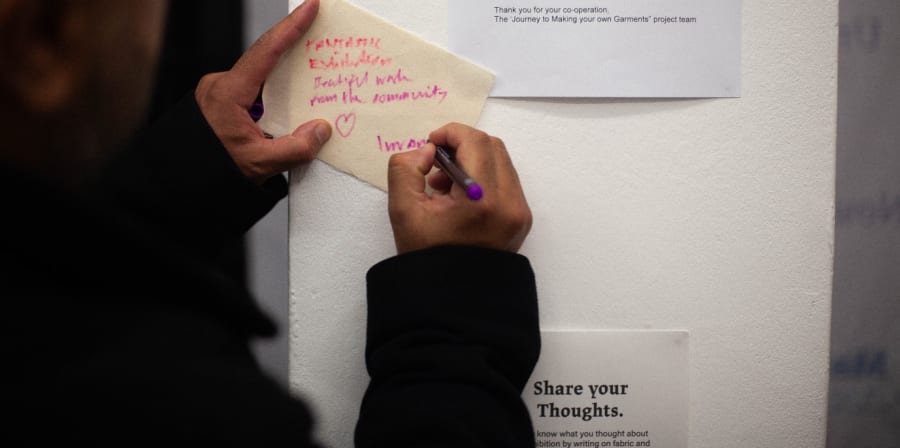
“Museum communication should not be depicted as a linear process but as an interactive one where both the exhibition and the visitor contribute to the communication.”
George E. Hein, Learning in the Museum
Forming a dialogue between gallery and visitor is something that I really wanted to bring into this exhibition. If I see a question proposed or a task to do in a museum or exhibition, I always jump at the chance to be tactile and carry on that dialogue. I also wanted to ensure that this didn’t feel out of place in the exhibition, resulting in the 'visitor engagement mannequin'. Shapes resembling pattern pieces were cut out in calico fabric for visitors to write their thoughts on and pin to the mannequin. This created something that evolved throughout the exhibition and beyond as the mannequin began empty and gradually filled up. Encouraging this interaction assists in learning and meaning making for the visitor and can provoke deeper thinking into their experiences.

Being in the gallery every day meant I was able to discover first-hand what visitors connected with. A man from the local community came into the gallery on the first day sharing his connection with one of the garments. He even went home and returned later in the day with traditional garments from his culture that resembled what he had seen displayed in the gallery.
The participants involved in the workshops come from varied cultural backgrounds, representing this diversity has been an essential part of the fruition of the exhibition. From the range of languages spoken to the creativity that has been uncovered."
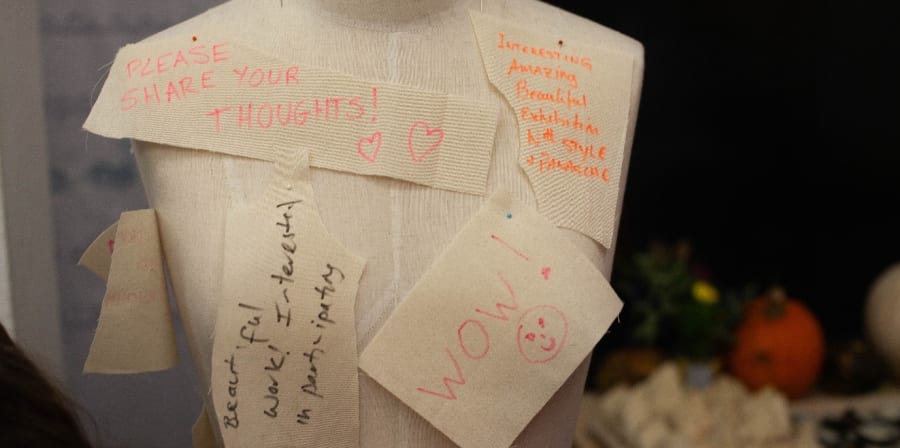
Louise Thornton
Photographs by Eugenie Flochel

